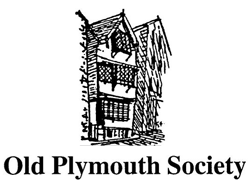by Gloria Dixon
Published March 2012
Whilst looking through some old papers, I came across this article which celebrated the centenary of the birth of Captain Scott RN. It was recorded in 1968 in the second copy of The Grog Tub, which was the newsletter issued by The Royal William Yard to its employees.
This is the centenary year of the birth of Devonports famous Polar Explorer, Captain Robert Falcon Scott RN. By the time the Grog Tub has been issued homage to Scott will have been made by Penlee Secondary School in which Royal William Yard will have made a small contribution by loaning some period uniforms for the school for their production.
What links have Royal William Yard with Captain Scott? Although his national Memorial may be tucked away at Mount Wise we are privileged that it overlooks Royal William Yard. His ancestry and career were closely associated with this Victualling Yard. His grandfather, Robert Scott, had been a Ships Purser, retiring in 1826 to purchase the Hoe Gate Street Brewery, within a stones throw of the old Victualling Office at Lambhay Hill.
Captain Scotts naval career started as a cadet at HMS Britannia long before we kitted up the cadets at Dartmouth College. However, in all probability he received some slops which came from Royal William Yard and used those decorative plates, similar to those held in our Museum. He was later to command HM Ships Essex and Bulwark which stored frequently at Plymouth and no doubt included in the supplies was a Captains set of Mess Gear for his use.
When he was later to command the Discovery and Terra Nova on his Antarctic Expeditions, it is our regret that the Victualling Yard could not give him the same service as when he commanded HM Ships since the expeditions were not sponsored by the Navy. The Royal Navys representatives on the Discovery were by special Admiralty dispensation allowed to wear uniforms while serving with the Expedition providing that the regulations are strongly adhered to. Scott, then a Commander, could be counted on to see that they were. No suitable arctic clothing was carried by victualling yards in those days and for the Discovery only 2000 was allowed for the specialised clothing required for some fifty men. All the fur lined suits and mitts, mainly of wolf and reindeer skins, and the sleeping bags were bought in Norway, but the windproof outer clothing was made in Britain. Much of the provisions came in the form of gifts from firms, Colmans not only supplied mustard, but also 9 tons of flour, Cadburys gave 3500 pounds of cocoa and chocolate and Birds donated 8 hundredweight of baking and custard powder. One important item was the sledging food, pemmican, a compressed ration of dried beef mixed to a paste with melted lard which had once been made in Britain for English Arctic explorers, for example Fankin, but Scott had to get this from Copenhagen and Chicago.
Considerable scientific knowledge on keeping qualities of food stuffs and prevention of scurvy was learnt from these expeditions and were to prove useful in the future for producing canned foods, improved rations and dietary in the Services.
It is therefore only fitting that Royal William Yard should also salute Captain Scott in this his Centenary Year.
